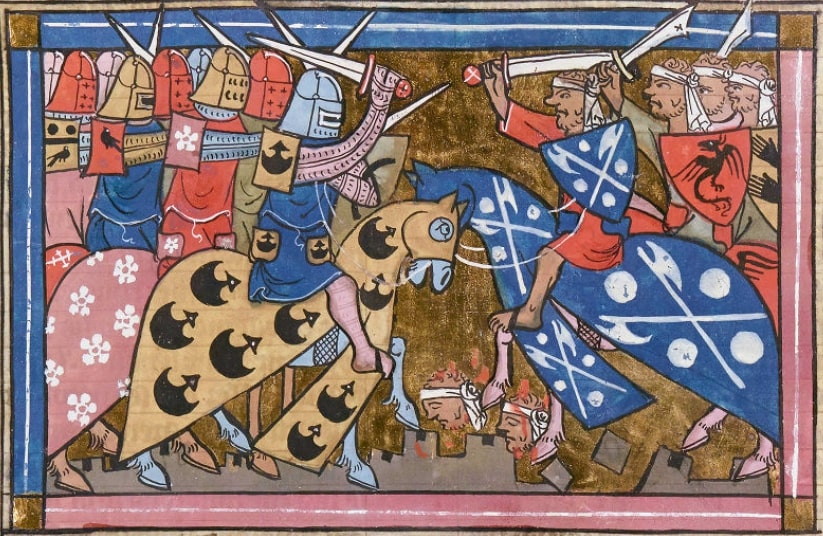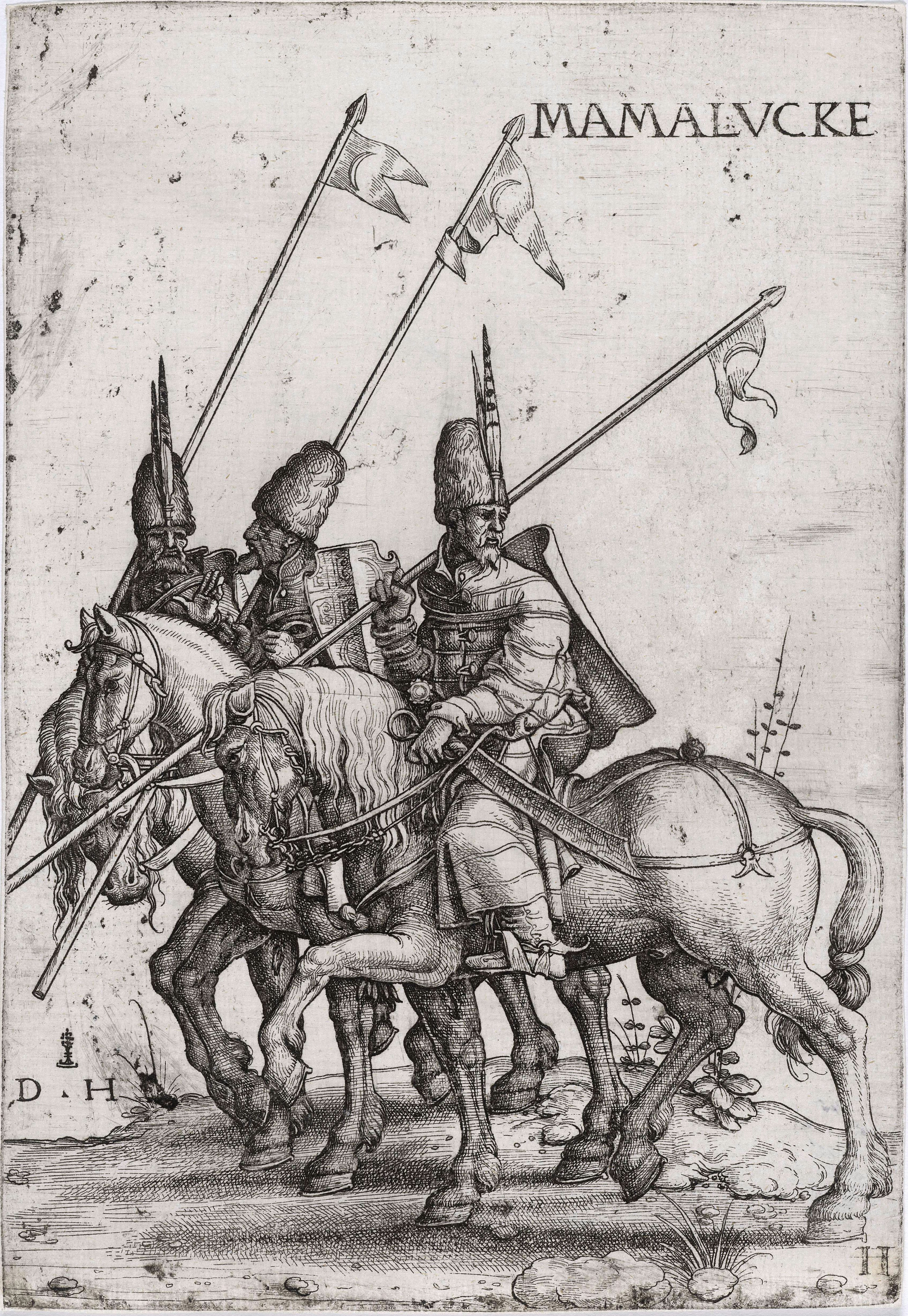|
Fall Of Arsuf
In late March 1265 Sultan Baibars, Muslim ruler of the Mamluks, laid siege to Arsuf. It was defended by 270 Knights Hospitallers. At the end of April, after 40 days of siege, the town surrendered. However, the Knights remained in their formidable citadel. Baibars convinced the Knights to surrender by agreeing to let them go free. Baibars reneged on this promise immediately, taking the knights into slavery.Slack, Corliss K. (2013)Historical Dictionary of the Crusades Scarecrow Press, p. 50. References See also * Apollonia–Arsuf Apollonia ( grc, Απολλωνία; he, אפולוניה), known in the Early Islamic period as Arsuf ( ar, أرْسُوف, translit=Arsūf) and in the Crusader Kingdom of Jerusalem as Arsur, was an ancient city on the Mediterranean coast of ... Sieges involving the Mamluk Sultanate Conflicts in 1265 1265 in Asia Battles of the Crusades 13th century in the Mamluk Sultanate Military history of the Crusader states between the Seventh and E ... [...More Info...] [...Related Items...] OR: [Wikipedia] [Google] [Baidu] |
Crusades
The Crusades were a series of religious wars initiated, supported, and sometimes directed by the Latin Church in the medieval period. The best known of these Crusades are those to the Holy Land in the period between 1095 and 1291 that were intended to recover Jerusalem and its surrounding area from Islamic rule. Beginning with the First Crusade, which resulted in the recovery of Jerusalem in 1099, dozens of Crusades were fought, providing a focal point of European history for centuries. In 1095, Pope Urban II proclaimed the First Crusade at the Council of Clermont. He encouraged military support for Byzantine emperor AlexiosI against the Seljuk Turks and called for an armed pilgrimage to Jerusalem. Across all social strata in western Europe, there was an enthusiastic response. The first Crusaders had a variety of motivations, including religious salvation, satisfying feudal obligations, opportunities for renown, and economic or political advantage. Later crusades were ... [...More Info...] [...Related Items...] OR: [Wikipedia] [Google] [Baidu] |
Mamluk Sultanate (Cairo)
The Mamluk Sultanate ( ar, سلطنة المماليك, translit=Salṭanat al-Mamālīk), also known as Mamluk Egypt or the Mamluk Empire, was a state that ruled Egypt, the Levant and the Hejaz (western Arabia) from the mid-13th to early 16th centuries. It was ruled by a military caste of mamluks (manumitted slave soldiers) headed by the sultan. The Abbasid caliphs were the nominal sovereigns. The sultanate was established with the overthrow of the Ayyubid dynasty in Egypt in 1250 and was conquered by the Ottoman Empire in 1517. Mamluk history is generally divided into the Turkic or Bahri period (1250–1382) and the Circassian or Burji period (1382–1517), called after the predominant ethnicity or corps of the ruling Mamluks during these respective eras.Levanoni 1995, p. 17. The first rulers of the sultanate hailed from the mamluk regiments of the Ayyubid sultan as-Salih Ayyub (), usurping power from his successor in 1250. The Mamluks under Sultan Qutuz and Baybars r ... [...More Info...] [...Related Items...] OR: [Wikipedia] [Google] [Baidu] |
Knights Hospitaller
The Order of Knights of the Hospital of Saint John of Jerusalem ( la, Ordo Fratrum Hospitalis Sancti Ioannis Hierosolymitani), commonly known as the Knights Hospitaller (), was a medieval and early modern Catholic military order. It was headquartered in the Kingdom of Jerusalem until 1291, on the island of Rhodes from 1310 until 1522, in Malta from 1530 until 1798 and at Saint Petersburg from 1799 until 1801. Today several organizations continue the Hospitaller tradition, specifically the mutually recognized orders of St. John, which are the Sovereign Military Order of Malta, the Most Venerable Order of the Hospital of Saint John, the Bailiwick of Brandenburg of the Chivalric Order of Saint John, the Order of Saint John in the Netherlands, and the Order of Saint John in Sweden. The Hospitallers arose in the early 12th century, during the time of the Cluniac movement (a Benedictine Reform movement). Early in the 11th century, merchants from Amalfi founded a hospital ... [...More Info...] [...Related Items...] OR: [Wikipedia] [Google] [Baidu] |
Baibars
Al-Malik al-Zahir Rukn al-Din Baybars al-Bunduqdari ( ar, الملك الظاهر ركن الدين بيبرس البندقداري, ''al-Malik al-Ẓāhir Rukn al-Dīn Baybars al-Bunduqdārī'') (1223/1228 – 1 July 1277), of Turkic Kipchak origin, commonly known as Baibars or Baybars ( ar, بيبرس, ''Baybars'') – nicknamed Abu al-Futuh (; English: ''Father of Conquests'', referring to his victories) – was the fourth Mamluk sultan of Egypt and Syria in the Bahri dynasty, succeeding Qutuz. He was one of the commanders of the Egyptian forces that inflicted a defeat on the Seventh Crusade of King Louis IX of France. He also led the vanguard of the Egyptian army at the Battle of Ain Jalut in 1260, which marked the first substantial defeat of the Mongol army and is considered a turning point in history. The reign of Baybars marked the start of an age of Mamluk dominance in the Eastern Mediterranean and solidified the durability of their military system. He managed to pa ... [...More Info...] [...Related Items...] OR: [Wikipedia] [Google] [Baidu] |
Mamluk
Mamluk ( ar, مملوك, mamlūk (singular), , ''mamālīk'' (plural), translated as "one who is owned", meaning "slave", also transliterated as ''Mameluke'', ''mamluq'', ''mamluke'', ''mameluk'', ''mameluke'', ''mamaluke'', or ''marmeluke'') is a term most commonly referring to non-Arab, ethnically diverse (mostly Southern Russian, Turkic, Caucasian, Eastern and Southeastern European) slave-soldiers and freed slaves who were assigned military and administrative duties, serving the ruling Arab dynasties in the Muslim world. The most enduring Mamluk realm was the knightly military class in Egypt in the Middle Ages, which developed from the ranks of slave-soldiers. Originally the Mamluks were slaves of Turkic origin from the Eurasian Steppe, but the institution of military slavery spread to include Circassians, Abkhazians, Georgians,"Relations of the Georgian Mamluks of Egypt with Their Homeland in the Last Decades of the Eighteenth Century". Daniel Crecelius and Gotch ... [...More Info...] [...Related Items...] OR: [Wikipedia] [Google] [Baidu] |
Gestes Des Chiprois
Templar of Tyre (french: Templier de Tyr) is the conventional designation of the anonymous 14th-century historian who compiled the Old French chronicle known as the ''Deeds of the Cypriots'' (French: ''Gestes des Chiprois''). The ''Deeds'' was written between about 1315 and 1320 on Cyprus and presents a history of the Crusader states and the Kingdom of Cyprus from 1132 down to 1309 as well as an account of the trials of the Templars in 1314.Minervini 2006. It is divisible into three parts and the third, which is the original work of the compiler, is the most important source for the final years of the Kingdom of Jerusalem and one of only two eyewitness accounts of the fall of Acre in 1291.Crawford 2016, p. 1. Author All that can be known of the anonymous author/compiler must be derived from the text of the ''Deeds'' itself. The designation Templar of Tyre, implying that the author/compiler was a member of the Knights Templar resident in Tyre, has long been recognised as ungrou ... [...More Info...] [...Related Items...] OR: [Wikipedia] [Google] [Baidu] |
Apollonia–Arsuf
Apollonia ( grc, Απολλωνία; he, אפולוניה), known in the Early Islamic period as Arsuf ( ar, أرْسُوف, translit=Arsūf) and in the Crusader Kingdom of Jerusalem as Arsur, was an ancient city on the Mediterranean coast of what is today Israel. In Israeli archaeology it is known as Tel Arshaf (). Founded by the Phoenicians during the Persian period in the late sixth century BCE, it was inhabited continuously until the Crusader period, through the Hellenistic, Roman, and Byzantine periods, during the latter being renamed to Sozusa ( grc, Σώζουσα, links=no, or ''Sozusa in Palaestina'' to differentiate it from Sozusa in Libya).Cohen, Getzel M., ''The Hellenistic Settlements in Syria, the Red Sea Basin, and North Africa'' (2006)p. 234 It was situated on a sandy area ending towards the sea with a cliff, about south of Caesarea. It fell to the Muslims in 640, was fortified against Byzantine attacks and became known as Arsuf. In 1101 it was conqu ... [...More Info...] [...Related Items...] OR: [Wikipedia] [Google] [Baidu] |
Sieges Involving The Mamluk Sultanate
A siege is a military blockade of a city, or fortress, with the intent of conquering by attrition, or a well-prepared assault. This derives from la, sedere, lit=to sit. Siege warfare is a form of constant, low-intensity conflict characterized by one party holding a strong, static, defensive position. Consequently, an opportunity for negotiation between combatants is common, as proximity and fluctuating advantage can encourage diplomacy. The art of conducting and resisting sieges is called siege warfare, siegecraft, or poliorcetics. A siege occurs when an attacker encounters a city or fortress that cannot be easily taken by a quick assault, and which refuses to surrender. Sieges involve surrounding the target to block the provision of supplies and the reinforcement or escape of troops (a tactic known as " investment"). This is typically coupled with attempts to reduce the fortifications by means of siege engines, artillery bombardment, mining (also known as sapping), or the us ... [...More Info...] [...Related Items...] OR: [Wikipedia] [Google] [Baidu] |
Conflicts In 1265
Conflict may refer to: Arts, entertainment, and media Films * ''Conflict'' (1921 film), an American silent film directed by Stuart Paton * ''Conflict'' (1936 film), an American boxing film starring John Wayne * ''Conflict'' (1937 film), a Swedish drama film directed by Per-Axel Branner * ''Conflict'' (1938 film), a French drama film directed by Léonide Moguy * ''Conflict'' (1945 film), an American suspense film starring Humphrey Bogart * ''Catholics: A Fable'' (1973 film), or ''The Conflict'', a film starring Martin Sheen * ''Judith'' (1966 film) or ''Conflict'', a film starring Sophia Loren * ''Samar'' (1999 film) or ''Conflict'', a 1999 Indian film by Shyam Benegal Games * ''Conflict'' (series), a 2002–2008 series of war games for the PS2, Xbox, and PC * ''Conflict'' (video game), a 1989 Nintendo Entertainment System war game * '' Conflict: Middle East Political Simulator'', a 1990 strategy computer game Literature and periodicals * ''Conflict'' (novel) ... [...More Info...] [...Related Items...] OR: [Wikipedia] [Google] [Baidu] |
1265 In Asia
1 (one, unit, unity) is a number representing a single or the only entity. 1 is also a numerical digit and represents a single unit of counting or measurement. For example, a line segment of ''unit length'' is a line segment of length 1. In conventions of sign where zero is considered neither positive nor negative, 1 is the first and smallest positive integer. It is also sometimes considered the first of the infinite sequence of natural numbers, followed by 2, although by other definitions 1 is the second natural number, following 0. The fundamental mathematical property of 1 is to be a multiplicative identity, meaning that any number multiplied by 1 equals the same number. Most if not all properties of 1 can be deduced from this. In advanced mathematics, a multiplicative identity is often denoted 1, even if it is not a number. 1 is by convention not considered a prime number; this was not universally accepted until the mid-20th century. Additionally, 1 is the ... [...More Info...] [...Related Items...] OR: [Wikipedia] [Google] [Baidu] |




